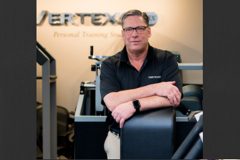The Truth About Core Exercises
Grab your anatomy book and look up the word “core”. You won’t find it. That’s because the entire concept of Core Exercises is a made up marketing term. Your “core”, as the term is commonly used, can refer to anything in your mid-torso. This includes muscles such as your rectus abdominis, your lower back, and the internal and external obliques. The truth is, there is nothing special about working these muscles that make them any more important than the muscles in your limbs, upper torso, or any other part of your body.
Working your ‘core’ is supposed to bring about a whole lot of health benefits. A simple Google search of “benefits of a strong core” brings up these results:
- “Core exercises improve your balance and stability.”
- “Core exercises train the muscles in your pelvis, lower back, hips and abdomen to work in harmony. This leads to better balance and stability, whether on the playing field or in daily activities.”
- “Core strength is the ability to support your spine and keep your body stable and balanced.”
- “Core strength allows you to perform manual tasks safely and effectively in everyday life.”
Those seem like relatively innocent claims at first blush, but think about it for a minute. Consider the claim that “Core exercises train your muscles to work in harmony.” What on earth is it supposed to mean for your muscles to “work in harmony”? Have you ever experienced attempting to do a task and finding that one of your muscles simply fails to cooperate? If you experience that level of loss of executive function, you need a neurologist, not a yoga mat. What they are most likely trying to refer to here is your brain’s ability to learn skill patterns, and direct your muscles more efficiently. This is something that your brain learns to do through repeated action, not something that you can ‘train’ your muscles themselves to do, and not something that will come about due to a stronger torso. To brush up on how muscles work, see my post HERE.
Core strength is also often cited as being responsible for improving balance and coordination. This article by Reader’s Digest Best Health claims that “when you’ve got a strong core, ‘everything else will fit into place on top of it,’ meaning your overall fitness will improve, making you less prone to injury down the road.” This simply doesn’t make sense. Nothing in your body is going to “fit into place” and become stronger on its own without taking direct action to make it stronger. To strengthen your entire body and improve your overall fitness, you need to do a training regimen that targets your entire body.
The big idea behind strengthening your core to improve balance is that you can “stabilize” your spine by working the muscles there. However, balance is a skill. It has more to do with your brain than your muscles, because your muscles don’t make decisions. You don’t learn to balance while riding a bike by doing lots of squats and crunches, you learn to balance while riding a bike by riding a bike. Your brain learns which muscles to engage to keep you balanced. While there is some correlation between your ability to balance and function and the condition of your muscles, it is not more important to work your abdominal muscles in this regard. It is just as important to strengthen and tone your hips, shoulders, and legs.
This same flaw in logic is what brought us the idea of “spot reduction”. You don’t improve balance by targeting only one muscle, and you don’t get rid of fat by targeting only one area. Spot reduction is the idea that you can get rid of fat in a particular area of your body by concentrating your exercise in that area. But your body just doesn’t store and use energy that way. When your muscles need energy to work, they don’t just grab it from the nearest pile of fat. Fat is burned when the calories that you are using are outpaced by the calories you are taking in.
According to Matt Brzycki in A Practical Approach to Strength Training, “Managing your weight boils down to the mathematical interplay of two variables: caloric consumption and caloric expenditure. If you consume (eat) more calories than you expend (use), you’ll gain weight. If you expend (use) more calories than you consume (eat), you’ll lose weight.” What this means is that you are not going to get rid of your gut by exclusively doing crunches.
While it is certainly important to strengthen and improve your abdominal and lower back muscles, it is not more important than training any of your other muscles. In order to improve coordination, balance, performance, and health, you will see more results by strengthening your body in a balanced way with a strength training program that targets all of the major muscle groups by doing a comprehensive total body workout and not just Core Exercises.
Request a complimentary first session at Vertex Fitness, Voted the BEST Personal Training Studio on the Main Line
Click HERE and we will schedule a session to try it yourself








Peg Molter
April 3, 2017 7:57 amYou are simply wrong. I have witnessed the enormous advantages of building a strong core and I challenge any naysayers to dispute it. I suggest you talk to a few of those people – like me – who have avoided falls, corrected asymmetrical abnormalities – or at least learned to deal with them – from the CORE, and been much more able to strengthen other muscle groups due to a strong and supportive core. Your facts and “research” are sadly lacking.
Dwayne Wimmer
April 3, 2017 8:48 amGood Morning Peg,
Thank you for your comment. The main enfaces of this post is simply that there is no one area of the body that is more important to train then another, given the subject isn’t in a rehabilitation situation. Most of the information out there about “CORE” training is based on antidotal evidence and not scientific studies. That being said, back to the first statement in the post, the “CORE” and many other terms such as “Muscle Memory” & “Muscle Confusion” (You can read posts about Muscle Memory and Muscle Confusion Here -> https://vertexfit.com/blog/?s=Muscle+Memory https://vertexfit.com/blog/there-is-no-such-thing-as-muscle-confusion/ ) are simply made up terms by marketers to sell things. I would like to see the exercise industry move as far away from these types of misleading buzzwords and use correct terminology.
Related links:
https://vertexfit.com/blog/are-your-muscles-confused/
https://vertexfit.com/blog/muscle-confusion/
https://vertexfit.com/blog/muscle-fibers-work/
https://vertexfit.com/blog/fitness-trends-why-there-are-so-many-products-available/
https://vertexfit.com/blog/fitness-trends-and-the-truth-about-exercise/
Again, thanks for your post.
Dwayne Wimmer
Owner
Vertex Fitness Personal Training Studio
Allan
June 30, 2017 2:35 pmBalance there is no concept, term or word that better describes the needs of us all.
Be it in exercise, diet or overall lfestyle.
It’s all about balance!!
Kipling Solid
June 12, 2017 11:44 pmDwayne, Thanks for your insights that ‘solidify’ the essence of CORE!
It’s is also Pilates speak! 🙂
Pilates simply put: Whole body exercise.
I have adopted a quote I use often from a fellow Pilates mentor and friend!
“The CORE is a condition NOT a location”
I’ve opened up more lolol conversation moments with that one!
Muscle patterns are opportunistic as well as imposters that hijak balanced body alignment.
leveraging certain powerful muscle groups are the ‘peacocks ‘ until they break. Then what? The shortened underused and ignored muscles have no ability to come to the rescue.
Balance is key.
Learning comes from a willingness to listen, observe and acknowledge that
“We don’t know what we don’t know”
Thanks again for your passion towards putting forth the effort to create a conversation of awareness.
Jen
June 18, 2017 3:22 pmJoseph Pilates said: you are as young as your spine!
I agree with dr Dwayne there must a balanced training between all muscles in our body, balance and strength . Slow twitch and fast twitch muscles, and pilates is a super fine workout to add to your training scedule
Peg Molter
June 15, 2017 5:08 pmSee my reply above. You are correct in that the term “core” is not a body part, but aside from that, you haven’t made one point that is worth much. My butt, legs, abs, and back muscles together form my “CORE” – call it what you like; it’s only semantics. But those muscles, working collectively as a group, support movement, prevent injuries, and make ADLs easier and safer. Yes, the brain has a large part in balance, but if your glutes are weak and puny, your brain can tell them to support you, and they’ll just ignore it – because they CAN’T comply. A strong quarterback isn’t worth diddly if he has no protection from his offensive line (he calls it a “team”; we might term it his “core” defenders) when he’s standing in the pocket looking for an open receiver. But if his guys are healthy, strong, and working together as a group, the QB will not only throw a few TDs in the process, but stay a lot healthier throughout the season. So please do a little research before you make silly claims that prevent people from doing something that might make achieving their overall health a lot easier much faster.
Dwayne Wimmer
June 16, 2017 3:30 pmPeg,
I believe if you reread the post, I think you will see we are mostly on the same page. There is no area of the body that is more important then another, (unless we use your football analogy, I would say training the neck would be more important then any other muscle, but that is another post). The body works as a unit and should be trained as one. The “Core” (The definition changes based on who you are talking to) is no more important then the chest and vis versa. However, I would argue that the area that is most neglected in most training programs is the hips. The center of the body is the hip joint, most movement in life use this area. The problem is that we use, and most people try to develop, the hip extensors which creates an imbalance. This imbalance creates an whole slew of problems. I could go on, but I think you can understand the point. Again, working the body as a unit will help to balance the strength of the muscles surrounding the joins which in turn creates a more balanced body. The more balanced body is less likely to get injured and everyday activities become easier. This then leads to an increased quality of life. But back to the purpose of the post, as professionals, I believe we need to stop making up buzz terms like “Core”. It is simply a marketing word that has no specific meaning.
Dwayne
Parker
July 7, 2017 12:26 amPeg,
Your calf is not part of your core. Your arguments are comical, but you’ve completely missed the point. Go do your yoga routine and calm down.
Chris
June 16, 2017 12:13 pmExcellent point Peg, and I love the quarterback analogy. I also understand Dwayne’s issue with “core”. He is right, there is no muscle called the core. Maybe it would be more correct to explain what muscles make up the core, and how they interact to support the rest and compliment the remainder of the body, but it’s just easier to say “core strength”. It is just semantics, but sometimes semantics can be used erroneously. There are lots of trainers out there, and most seem to know what they are doing, but there are some who don’t, so they just fake it. The fitness world has it’s share of “gimmicky” devices and in our ever-changing world of technology, and new understanding of how the body works, and how it can be strengthened, it’s hard to tell the real from the not-so-real. There are tried and true techniques to build strength, but we are also discovering how the brain learns, how it sends signals, and how it all works with muscles. Yes, three reps of eight can still build strength, but we are definitely learning new ways, and how to use new devices in conjunction with the tried and true to produce faster, better, safer results.
And yes, just so you know, I represent a product that uses “core” as part of its marketing. We don’t use it as a gimmick, but just a simpler way to communicate, instead of naming every muscle and how it interacts to form the “core”. We also believe that our product isn’t a miracle device, but a tool that when used in the hands of knowledgeable trainer, can produce desired results. All of our ultimate goals are to help others achieve their goals in fitness.
Dwayne Wimmer
June 16, 2017 3:43 pmChris,
The problem with just saying “Core Strength” is that there is no specific definition for it. If you ask 20 people to give a definition of the “Core” or “Core Strength” you will get 20 different answers. So, I don’t thin it is just semantics, it is lack of a definition.
As for trainers, I have been in the industry for almost 30 years, I can tell you the majority of trainers have very little clue to what they are doing. They take a weekend corse and go to the local gym and they are a trainer. I have seen so many people who have been injured by trainers it scares me to include myself in the profession. As a professional in this industry we need to work under the same Hippocratic Oath that doctors do, “First Do No Harm”. If someone gets injured under a trainers watch, they should be held liable.
There may be new tools and “New Ways” to train, but based on the science, it is still simple, the body adapts to an overload. Apply a stimulus that is over and above the bodies homeostasis and with proper recover the body will respond. There are more efficient and effective tools and ways of doing this, but the human body responds to the stress of an overload and it gets strong.
Like I stated in response to Peg’s post, I think as an industry, we need to stop using Buzz terms like “Core” and educate the consumer to what the product is really designed to do.
In closing, I agree, we should all be here to help others achieve their goals, but I have see way too many people who see the fitness industry as easy pickings to make money. The industry is full of “Snake Oil Salesmen” preying on the innocence of the general public.
Dwayne
Chris Kaiser
July 1, 2017 4:05 pmWhat does it mean to you guys to have a strong core? What injuries does it prevent?
Matt
July 30, 2017 9:20 amI find the ambiguity of saying ‘contract your core!’ very problematic when cueing exercises. If you tell a client to do this they assume you mean either an exaggerated vertical posture and/or sucking in of the belly button, both of which can ruin hinging at the hip or bracing. It really is as silly as a driving instructor vaguely telling their student to just ‘push a pedal!’